|
||||||||||
|
|
||||||||||
|
||||||||||
|
|
||||||||||
This week, we decided to focus our attention on a number of questions we have received about the Concorde. Though the supersonic airliner made its final flight nine months ago, the historic aircraft remains one of the most popular and most asked about on our site.
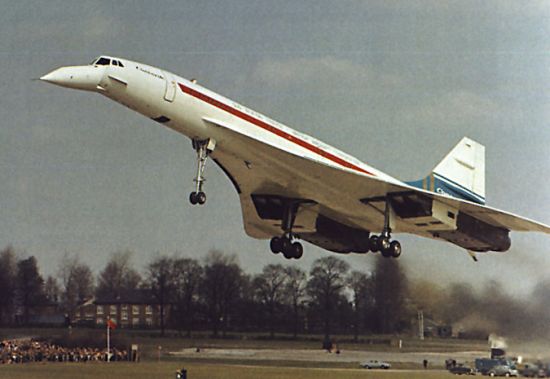
The production run included 16 aircraft. The first two were initial production models that never entered service. These planes were used to test production methods and airline training techniques. The two planes also conducted airworthiness flight testing and extensive route planning operations. Five of these first six test planes were soon placed on display at museums while the remaining British initial production model was given to British Airways as a spare parts aircraft.
In 1977, British Airways and Air France purchased the first production aircraft. Five were bought by British Airways and four by Air France at an estimated cost of £23 million ($46 million) each in 1977 prices. The British and French governments built another five aircraft but could find no airlines willing to buy them. These remaining Concordes were given to the two airlines between 1979 and 1980 for the grand total of 1 French franc or £1 respectively. The total cost of the 16 production aircraft was £654 million, but the two governments recouped only £278 million through sales to the airlines. This loss came on top of the initial development cost and had to be written off by the governments. In addition, the two governments continued to subsidize the operating costs of Concorde to the tune of tens of millions of pounds per year until 1984.
The 14 Concordes that ultimately entered service were split equally, seven each between the airlines. British Airways continued to operate its seven planes until the fleet was grounded in 2000. Air France retired one of its planes in 1982 to provide spare parts for the rest of the fleet, and another was lost in a fatal crash during takeoff from Paris in July 2000.
Following that accident, the airlines spent a considerable sum of money to modify the remaining planes to meet new
safety requirements before they were allowed to fly again. Air France completed these upgrades on four of its five
remaining aircraft and the fifth was retired. British Airways returned five of its seven planes to service and
kept the other two in storage. All production aircraft have now been retired and put on display in various museums
around the world.
- answer by Jeff Scott, 25 July 2004
Destinations regularly serviced by Concorde during its operational life included:
British Airways
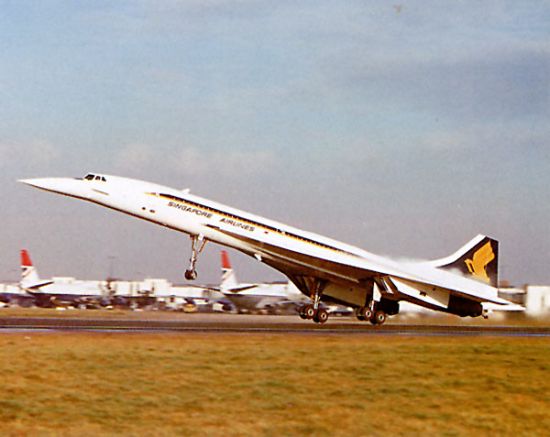
A similar arrangement was made with the American airline Braniff. Both British Airways and Air France forged agreements with Braniff to operate service between Europe and Dallas via Washington Dulles Airport. Crews would switch at Dulles so that Braniff pilots would fly the Concorde to and from Dallas Fort Worth.
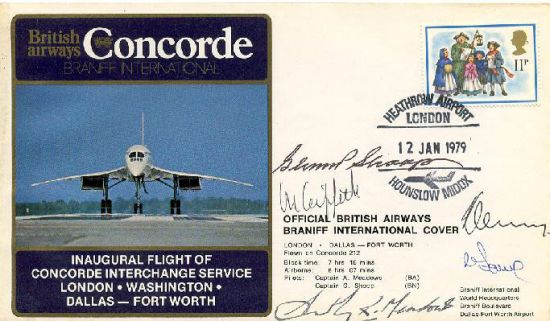
The Concordes used on this route retained the markings of their parent airlines and were not modified to display Braniff livery. However, the Concordes were forced to change registration numbers when the flight crews changed. This feat was accomplished by simply covering over the G or F in the registration number on the exterior of the plane with white tape and replacing it with the N used for US registered planes. The Braniff service only lasted from January 1979 to May 1980 when it was cancelled due to high costs and lack of passenger traffic.
I've been unable to find any information regarding a possible military version of Concorde. I don't believe any
such proposal was ever made to or requested by the military services.
- answer by Molly Swanson, 25 July 2004

Air France aircraft were arranged to carry 92 passengers while British Airways normally carried 100. The flight crew included a pilot (or captain), a co-pilot, and a flight engineer and cockpit seats were also available for two additional observers. The cabin crew could contain as many as six flight attendants.
British Airways estimated that more than 2.5 million passengers flew aboard Concorde between 1976 and 2003 over the
course of about 50,000 flights.
- answer by Molly Swanson, 25 July 2004
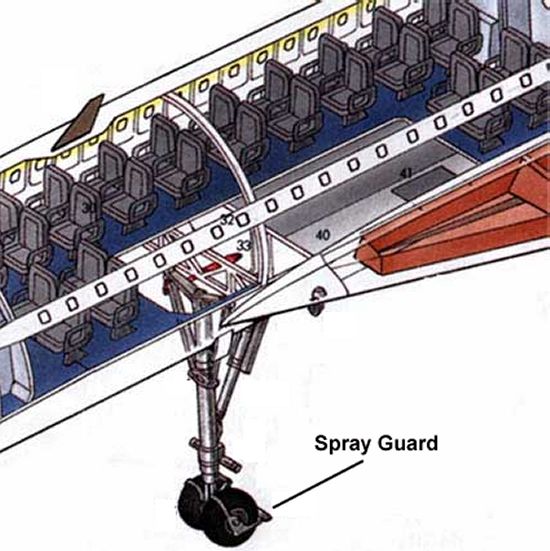
The purpose of the spray guard was to deflect that debris away so that it would not threaten the plane. However, the guard turned out to cause as much damage as it was intended to prevent because it would often break off and impact the aircraft. A number of such cases were reported by the airlines in which the spray guard caused fuel leaks after breaking off and penetrating the wing fuel tanks.
The problem was so prevalent that British Airways modified the spray guards on its planes to ensure that they could
not break off and damage the aircraft. Air France had not made the modification before its Concorde crashed in
2000, which made the guard one of the prime suspects in the accident. It turned out that the spray guard was not
the culprit in this case, but the accident was instead caused by a piece of metal debris on the runway.
- answer by Greg Alexander, 25 July 2004
The design of what ultimately became Concorde began in the late 1950s when commercial air service was just beginning to become the dominant form of long-distance travel. During the late 1950s and early 1960s, technology was progressing so rapidly that the public believed high speed aircraft and even commercial space travel would become commonplace in the near future. It was this mindset that made the Concorde possible, and it was shared by other nations as well. Both the Soviet Union and the United States were also developing their own equivalents to Concorde called the Tupolev Tu-144 and the Boeing SST.
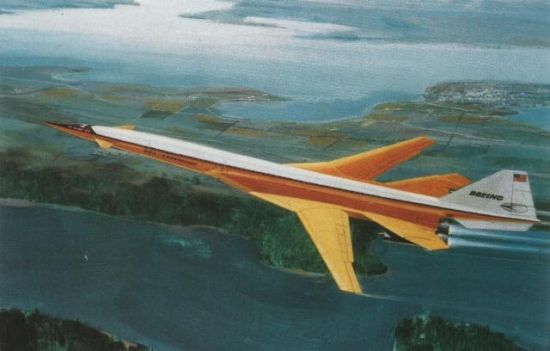
Unfortunately, the politics and economy of the world changed substantially between the early 1960s and the mid-1970s when Concorde was finally ready to enter service. One of the challenges that confronted Concorde was the growth of the environmental movement that bitterly fought against the plane. Chief among the complaints of environmentalists was the noise pollution that supersonic aircraft threatened to bring. It was because of this concern that most nations banned supersonic air travel over their territories to eliminate the danger of sonic booms. This legislation forced Concorde to seek out intercontinental routes across oceans. The routes that did travel over land, such as Washington DC to Dallas and London to Bahrain, were forced to remain subsonic and cruise at Mach 0.95. This cruise speed significantly increased fuel consumption and caused the cost per flight to skyrocket, which was one of the primary reaons why both routes were abandoned within a couple of years.
A second problem that plagued Concorde was the rise in oil prices that struck the West so forcefully during the 1970s. Supersonic flight requires powerful engines that consume much more fuel than traditional airliners flying at Mach 0.8. Oil was inexpensive in the early 1960s, so the airlines had little need to worry about fuel costs when the Concorde was being designed. As the airline industry changed in the 1970s and 1980s because of deregulation and increased competition, cutting costs became necessary simply for survival. Airlines just could not afford the cost of fuel needed for supersonic aircraft, so they had no interest in planes like Concorde.
Regardless, British Airways and Air France were able to overcome these challenges as best they could and eventually turned a profit on Concorde flights. They did so by abandoning the idea of supersonic travel for the masses and instead adopting a premium service catering to the elite. Concorde was most often flown by wealthy business executives and celebrities who needed to cross the Atlantic rapidly or who were simply attracted by the special treatment offered on Concorde flights. These upper class passengers could also afford to pay exorbidant ticket prices that could be as high as $10,000 one way. This business model allowed Concorde to generate a profit for its operators until the fleet was grounded following the Air France crash in 2000.
The accident investigation that followed lasted for an extended period and revealed a number of troubling safety concerns. Both British and French authorities revoked the Concorde's airworthiness certificates and mandated several modifications to the remaining fleet before Concorde would be allowed to fly again. Both airlines felt the aircraft could still be profitable and invested millions of dollars to return Concorde to service. Once authorities had agreed that the plane was again safe to fly, passenger service resumed in September 2001.
By this time, however, the air travel industry was in a serious downturn following the September 11 terrorist attacks. The slump in business caused passenger traffic on Concorde to drop so low that the airlines were having difficulty turning a profit. The situation only became worse when Airbus, the maintenance and parts supplier for Concorde, announced that the aircraft would no longer be supported after October 2003. The loss of this support meant that the airlines would be forced to acquire all the spare parts and complete all maintenance on their own, which was simply too expensive. The Airbus decision to stop supporting Concorde coupled with the loss of passengers doomed the aircraft to retirement. As the chief executive of Airbus, Noel Forgeard, said, "The costs of operating Concorde, and in particular maintenance and support, have become such that operations are unrealistic for any operator."
As for the second part of your question, there are a number of improvements that could potentially make supersonic
travel more economical. One of the most important concerns to airlines is the cost of operating an aircraft per
the number of passengers it carries per mile it travels, or the "cost per seat-mile." Concorde never proved
to be a commercial success because it cost too much to operate and carried too few passengers. To be a success,
any future SST will need to carry at least twice as many passengers as Concorde and its fuel consumption will have
to be comparable to a competing subsonic airliner.
- answer by Jeff Scott, 25 July 2004
Related Topics:
Read More Articles:


|
Aircraft | Design | Ask Us | Shop | Search |

|
|
| About Us | Contact Us | Copyright © 1997- | |||
|
|
|||